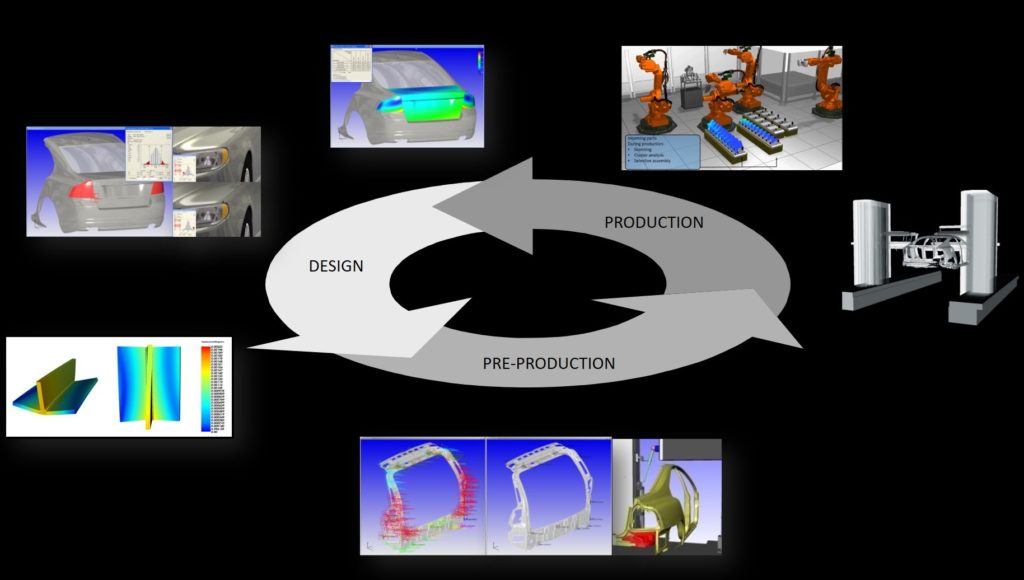
The concept of geometry assurance (also called dimensional control) refers to the set of activities contributing to minimizing the effect of geometric variation in the final product. Activities can be found in all the different phases of the product realization loop.
In the design phase, the product and the production concepts are developed. Different concepts (sub-solutions) are analyzed and optimized to withstand the effect of manufacturing variation and tested virtually based on available production data. In this phase, the concepts are optimized with respect to robustness and verified against an assumed production system by statistical tolerance analysis, both rigid and non-rigid (compliant).
In the verification (pre-production) phase, the product and the production system are physically tested and verified. In this phase inspection preparation and off-line programming of coordinate measurement machines and scanning equipment takes place. Here, all inspection strategies and inspection routines are decided.
In the production phase, all production process adjustments are completed and the product is in full production. The focus in this phase is on inspection data to control production and to detect and correct errors.
Digital Twin for Geometry Assurance

The geometry assurance process is necessary to create high-quality products, fulfilling future needs and sustainability requirements. RD&T Technology has a close collaboration with world-class research environments within geometry assurance and variation simulation and has also been a partner in EU projects as well as in national projects.
Effective and efficient variation simulation can also be used as digital twins for real-time optimization of the production. This has been utilized in the research project ”Smart Assembly 4.0”.
Contributing to Sustainability

Sustainable product and production development require an efficient digital geometry assurance process that reduces waste and contributes to sustainability in several ways. Directly, product quality can be balanced against manufacturing cost, robustness can be increased, scrap can be reduced, and time-consuming iteration loops can be minimized. An efficient digital geometry assurance process also reduces the time for transferring information between different activities and actors, reduces the need for physical documents, increases traceability, and has the potential to support future circular business models.

